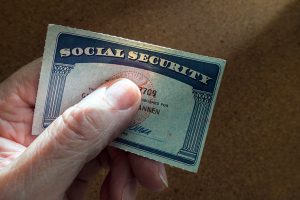Knowing the Right Tipping Etiquette
Date: November 18, 2016
Understanding the proper amount to tip can be confusing because the answer is often quite different from situation to situation. As a general rule, any time you receive service you might expect to leave a tip. However, this is an extremely broad rule because some service situations don’t require any tip at all. If you travel overseas, tipping etiquette can vary from country to country, and even from town to town.
General Tipping Etiquette
Tipping is said to have originated in England in the 16th century when coffee shops put out coin boxes “for prompt service.” Since then, tipping in the U.S. has evolved into a fairly standard regimen. Restaurant servers typically get 15 percent of the pre-tax bill or its common to reward exceptional service with 20 percent. Bartenders generally expect $1 to $2 per drink, or 15 to 20 percent of the total bill. You can tip a helpful sommelier, or wine steward, 15 percent in finer restaurants.
Additional Tip Amounts
Beyond these fairly common tipping scenarios, it’s also appropriate to tip in many other circumstances. Here is a list of additional service situations and suggested tip amounts:
- Coatroom attendant, $1 per coat
- Parking valet, $2
- Washroom attendant, 50 cents to $1
- Taxi driver, about 15 percent — additional dollars for bag help
- Food delivery person, 10 to 20 percent of the bill
- Grocery loader, $1 for bags brought to car
- Barber or hairdresser, 15 to 20 percent
- Shampoo person, $2
- Manicurist, 15 percent
- Spa service, 15 to 20 percent
- Skycaps, hotel doormen and bellboys, $1 to $2 per bag
- Hotel housekeeper, $2 to $5 per night
- Hotel concierge, $5 to $10 for getting you tickets to an event
Gas station attendants, handymen and coffee servers typically receive no tips.
Tipping While Overseas
Tipping practices overseas vary widely. It makes sense to check the specific norms for the countries you plan to visit if you’re heading off on a trip. Tipping overseas generally falls into two categories: It is either expected or frowned upon. The guidelines for tipping in the U.S. are generally fair approximations for those in countries where tipping is traditional. For example, you might be expected to leave about 15 percent of your bill for the waiter at a Canadian restaurant. In many foreign countries, a service charge of about 10 percent automatically applies to your bill, in which case additional tipping is unnecessary.
Many countries, including Japan, South Korea, China and the island nations of the South Pacific, do not expect or even accept tips. However, this culture may change over time. In countries like New Zealand where tipping was traditionally nonexistent, an influx of tourists leaving tips has slowly made the custom more acceptable there.
Changes in Tipping Etiquette
Although tipping is now becoming more common in some nations that traditionally did not accept tips before, tipping in certain American restaurants is going away. Joe’s Crab Shack, which is a national full service restaurant chain, has implemented a no-tipping policy in about 10 percent of its restaurants. A prominent New York restaurant owner announced the same policy, and the idea seems to be gaining traction around the country. In exchange for the loss in tips, restaurants are paying their workers a significantly higher base wage. In the case of Joe’s Crab Shack, this increase is funded by a 12 to 15 percent increase in menu prices.
Quicken has made the material on this blog available for informational purposes only. Use of this website constitutes agreement to our Terms of Use and Privacy Policy. Quicken does not offer advisory or brokerage services, does not recommend the purchase or sale of any particular securities or other investments, and does not offer tax advice. For any such advice, please consult a professional.


